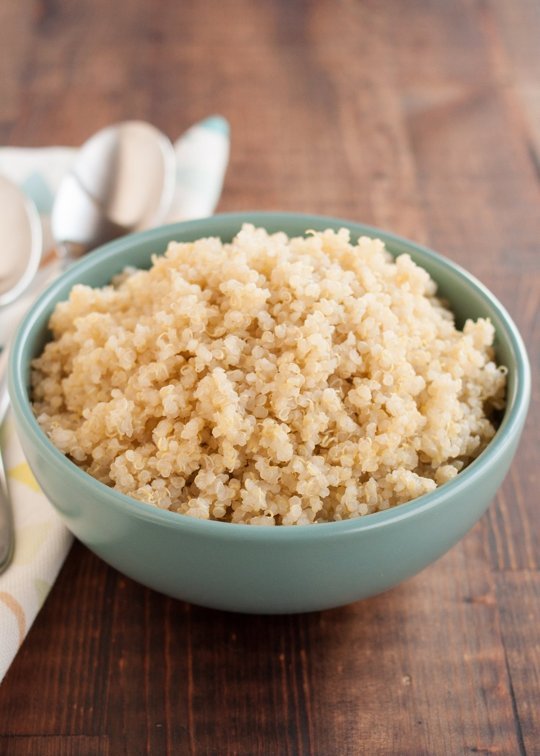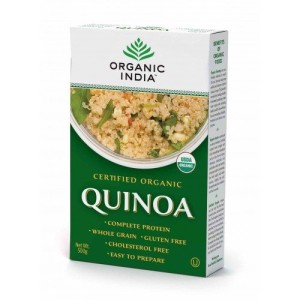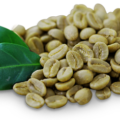🌾 Quinoa: The Superfood You Shouldn’t Ignore!
Many health-conscious individuals are already familiar with the benefits of quinoa. But for those who are new to it — welcome to the world of one of the most powerful superfoods of the decade!
Quinoa (pronounced keen-wah) is technically a seed from the Chenopodium quinoa plant, but it is commonly referred to as a “pseudo-cereal” because it’s prepared and eaten like a grain. What makes quinoa truly unique is that unlike most grains, it contains all nine essential amino acids — especially lysine, which is often missing in other cereals. This makes it a complete protein, a rare gem in the plant-based world!
👉 Vegetarians, take note: Adding quinoa to your meals is an excellent way to ensure you’re getting a balanced intake of essential amino acids in just one ingredient.
And that’s not all — quinoa is naturally gluten-free, making it an ideal option for people with gluten sensitivities or those choosing a gluten-free lifestyle.
🏺 A Superfood with a Super History
Did you know quinoa was considered sacred by the ancient Incas? They referred to it as the “mother of all grains.” Though it has been a staple in South American diets for thousands of years, it has only recently gained global popularity and earned its “superfood” status.
Quinoa comes in white, red, and black varieties — each with its own texture and subtle flavor differences.
🌟 Key Health Benefits of Quinoa:
-
Complete protein source with all essential amino acids
-
Rich in antioxidants like quercetin and kaempferol
-
Provides phytonutrients such as ferulic, coumaric, and vanillic acids
-
Contains anti-inflammatory compounds like arabinans and rhamnogalacturonans
-
Good source of vitamin E (gamma-tocopherol)
-
High in important minerals: manganese, magnesium, phosphorus, copper, zinc
-
Packed with dietary fiber and folate
🍽️ How to Use Quinoa?
Quinoa is incredibly versatile — use it in salads, soups, stir-fries, or even as a base for breakfast bowls. From savory to sweet, quinoa fits right into a variety of recipes.
Image Source
Nutritional content of Quinoa (1cup cooked Quinoa i.e Approx 185g)
Calories 222
Carbohydrate 39
Dietary fiber 5
Sugar 1.6Kcals
Protein 8g
Total Fat 3.6g
Saturated fat 0.4g
Polyunsaturate fats 2g
Monounsaturated fats 1g
Cholesterol 0mg
Sodium 13mg
Potassium 318mg
Calcium 31
Iron 2.76
Magnesium 118
Phosphorus 281
Zinc 2.02

Cooked Quinoa
Image Source
Health Benefits of Quinoa:
- Has Antiseptic Properties: During the processing of Quinoa there are saponins which are removed from it and then reused as an antiseptic, as well as a detergent. This shows just one more aspect of this superseed. There is some misperception as to what Quinoa is exactly, whether it’s a grain or a seed. The part that is edible is the seed, which makes it great for grain-free diets and diet plans. But the plant that it grows on is grain-like which causes the confusion. There are many benefits to the plant, and it shows just how versatile it can be, much the same way aloe can be eaten, and used to treat the skin.
- Supports a Gluten-Free Diet: When you’ve gone gluten free either for medical reasons or for dietary ones, you’ll quickly find out that while there may be more GF options than there were a decade ago, there is still a lot of room for more products. In the meantime you can stay gluten-free by using Quinoa. It’s not a grain, it’s a seed, and it doesn’t contain any wheat or gluten in it, so you can feel free to enjoy it in loads of different Quinoa recipes without worrying if it’s going to upset your system.
- Contains Flavonoids: There are flavonoids in Quinoa that are typically only found in other foods like berries, and the levels that it contains are pretty substantial. These flavonoids can help with things like cardiovascular disease and inflammatory conditions. This means that if you are at risk for heart disease or just want to do your best to prevent it, you can start eating more Quinoa and be doing a great service in this regard. And if you have arthritis or other inflammatory conditions you should start adding more of it to your diet right away for potential relief.
- Helps You Avoid Getting Fat: The fiber in Quinoa helps the body get rid of unneeded fat, while also helping you to eat less by making you feel fuller longer. This will help you eat less overall, as well as help your digestive system process. The overall result is that if you have a problem with overeating, or a sluggish digestion, Quinoa can help on both counts. The results of adding Quinoa to your diet can typically be felt right away, as you start to feel lighter both by not eating as much, and having more regularity than you currently do.
- Low on the Glycemic Index: Quinoa clocks in at 53 on the Glycemic Index, which limbos under the 55 required to be considered a food that helps to stabilize your blood sugar. This makes it a good food if you’re trying to prevent getting diabetes, and you can combine it with any other foods that are also low on the GI scale so that you can nourish yourself without having to worry about spiking your blood glucose levels. Some diets, like the Paleo diet, consider a ranking of 53 high, so it’s all a matter of perspective and what your end goal is.
- Potentially Anti-Inflammatory: Recent research is showing that Quinoa may be an anti-inflammatory food. But you don’t have to wait for the research to confirm what many are already saying to be true. So many people report getting relief from their inflammatory conditions after they start eating Quinoa. There are several vitamins and minerals that it contains, but it is the phytonutrients, those that help battle back free radical damage with their antioxidant effect, that are the prime suspect for what’s causing the help in this area. It’s not very often that a food has this amount of healing properties, which makes it a bona fide superfood and one of the healthiest food to eat.
- Helps Balance Blood Sugar Levels: It’s not always eating foods that are sugar-free, or eating portion sizes that are considered small by American standards. Adding Quinoa to a meal will help you keep your blood sugar levels in a happy place while at the same time getting your taste buds to agree. If you have a specific food or recipe that you normally can’t have, see if adding Quinoa to it brings it down to the point where you can enjoy it without any trouble. If you find that you respond well to it you can start using it in more and more of your classic recipes.
- Good Source of B Vitamins: When compared to other grains, Quinoa has a better B Vitamin profile than most. Technically it’s a seed, not a grain, but it most often gets compared to grains because of the way it is cooked and the texture it has when eaten. The B Vitamin family helps with plenty of processes that the body goes through each day, and it’s important to stay topped up on them. Vitamin B12 alone has a host of benefits that can’t be overlooked, so you definitely don’t want to run a shortage on it.
- Helps Lower Cholesterol: It’s the fiber once again that provides the benefits here, this time helping to lower your cholesterol. Many people resort to cholesterol-lowering drugs, and it’s always important to listen to your doctor’s advice. But with dietary changes and you doctor’s guidance you can avoid or reduce the amount of medication you have to take to keep your cholesterol in check. Quinoa makes it easy since it’s can be used in a myriad of ways, and you won’t feel like you’re eating a special diet of any sort, or missing out on the foods you love.
- Helps Lower Blood Pressure: The fiber levels in Quinoa have a direct effect on your blood pressure, in addition to the other benefits listed. The thing that prevents most people from getting enough fiber each day is that many of the sources are not considered very appetizing. But quinoa has a very delicate flavor, so you can mix it with just about any food you enjoy and you’ll get the flavor from that without the Quinoa getting in the way. It’s a very easy way to keep your blood pressure levels in check, without turning your world upside down.
- Supports Weight Loss Efforts: If you’re on a diet you’ll probably be allowed to eat Quinoa on it. Some diets might say that you can’t have bread, or that you should avoid all wheat and grains. But that’s where Quinoa comes in handy, as it’s not a grain, contains no wheat, and bread made with Quinoa is likely not the bread they’re talking about. Because of its high protein content and great fiber levels, it gives a one-two punch to your weight loss goals, and has a host of other vitamins and minerals to keep you topped up and feeling good. The protein and amino acids will help with any weight training you’re doing, and the fiber keeps things moving internally.

Organic Quinoa
Indian Visitors: You can Buy Organic Quinoa here.
USA Visitors can buy Organic Quinoa from here.
Have you ever tried Quinoa? If not then try now and let me know about your quinoa health benefits after a few months. You can ask questions related to health benefits of Quinoa and I will try to get back to you with the most preferred answer.
RD Neha Kava
Latest posts by RD Neha Kava (see all)
- 3 Supplements To Try That Will Improve Your Health - March 15, 2025
- 3 Tips to Adding Supplements to Your Diet - March 14, 2025
- Beginners Running Tips – How to start getting in shape with the most efficient exercise out there - March 13, 2025




Well detailed article. Good to know about the numerous health benefits of Quinoa!